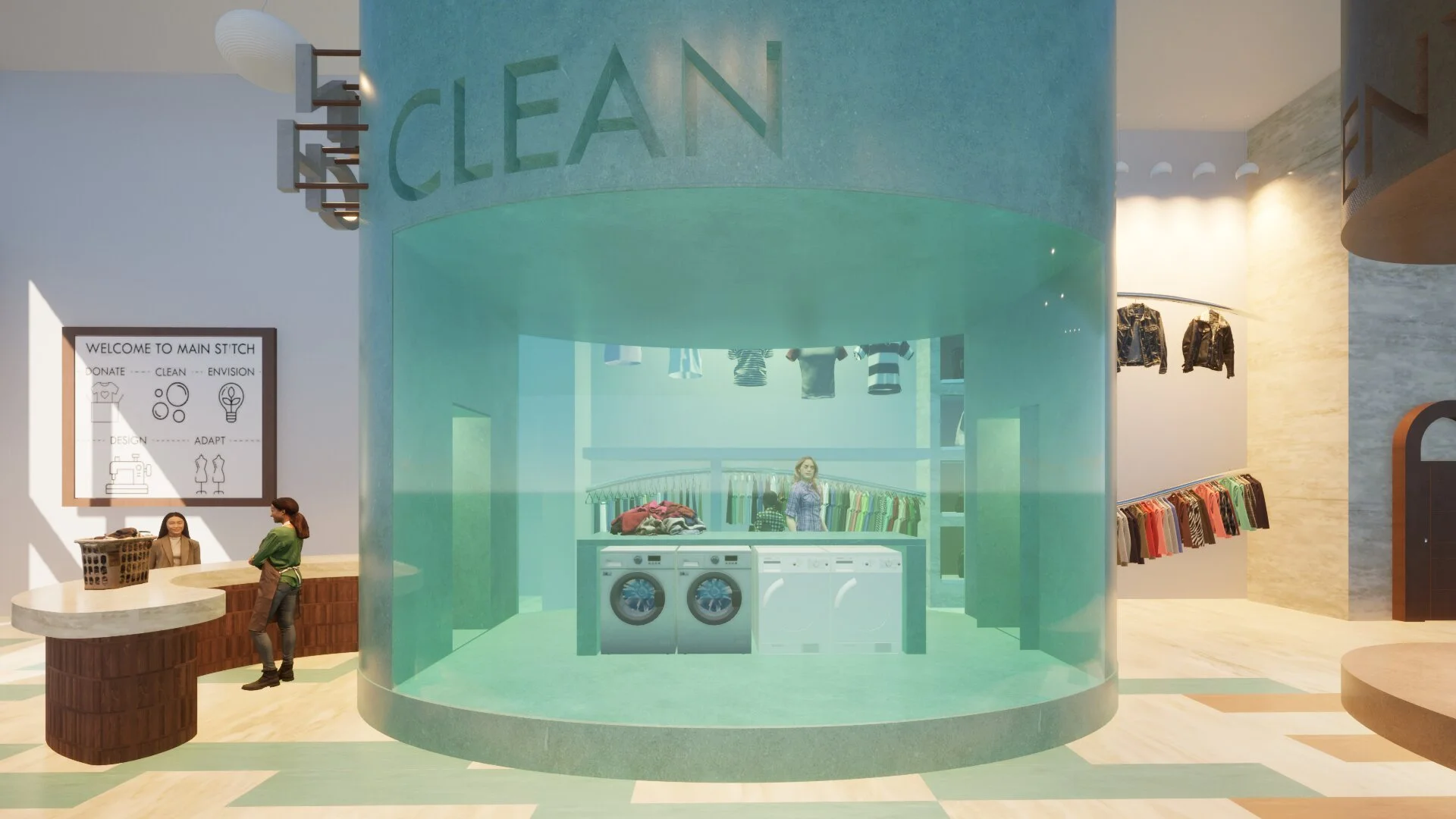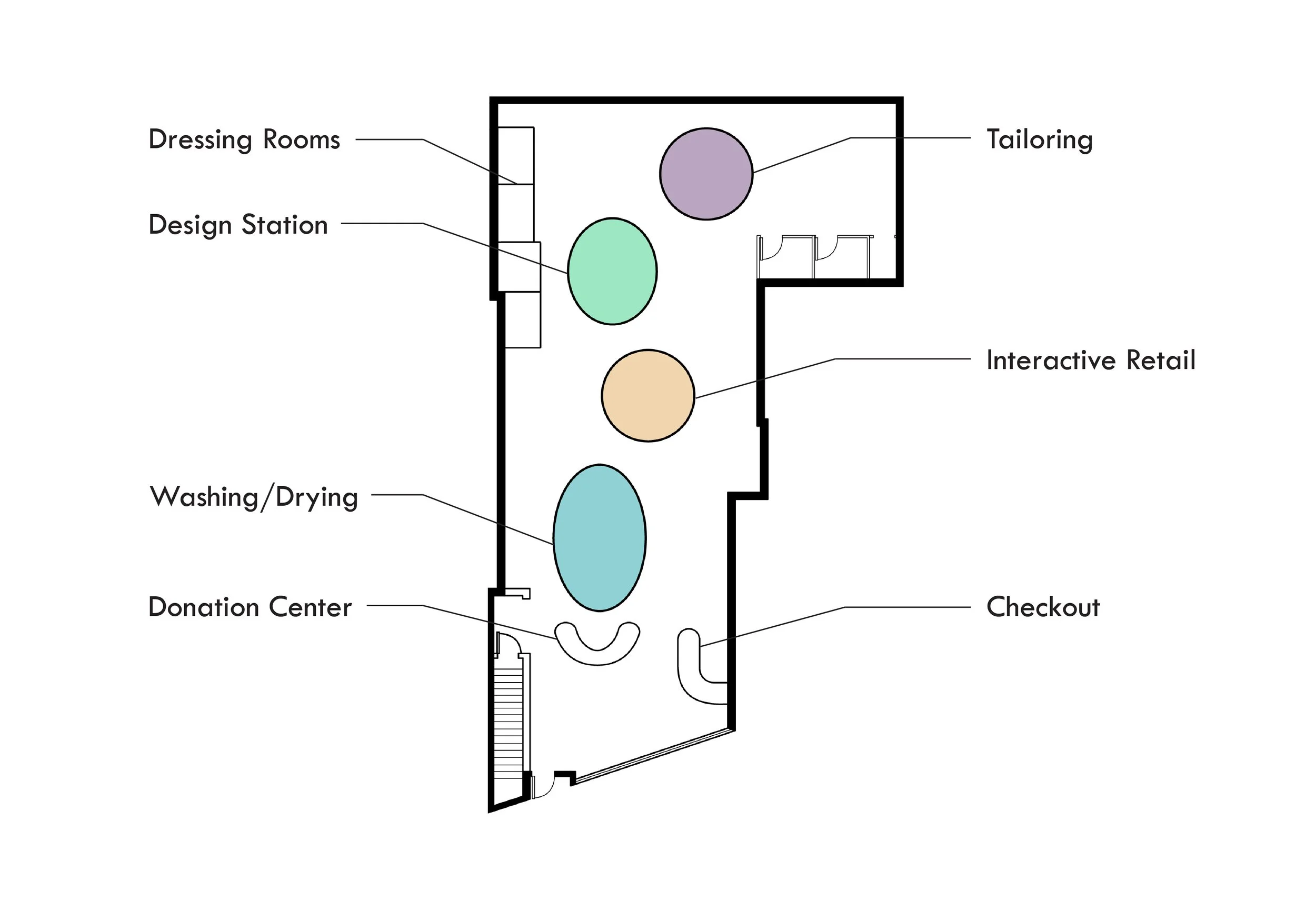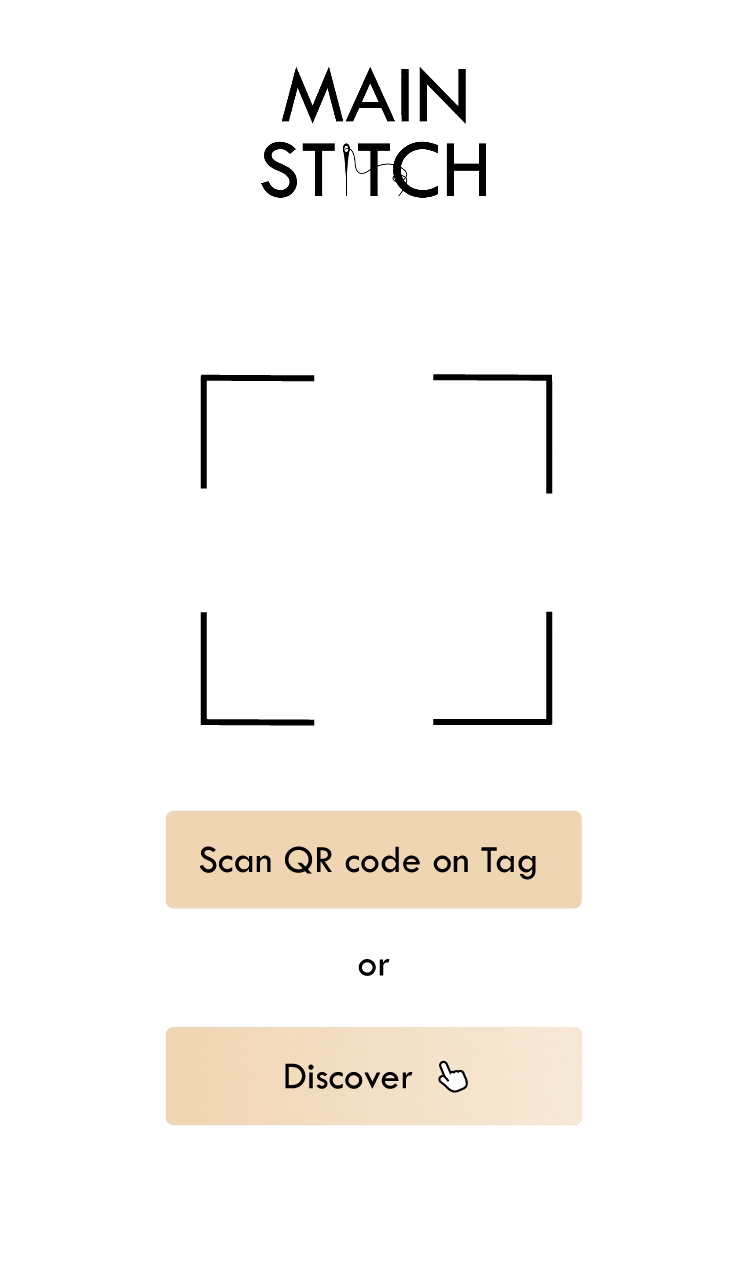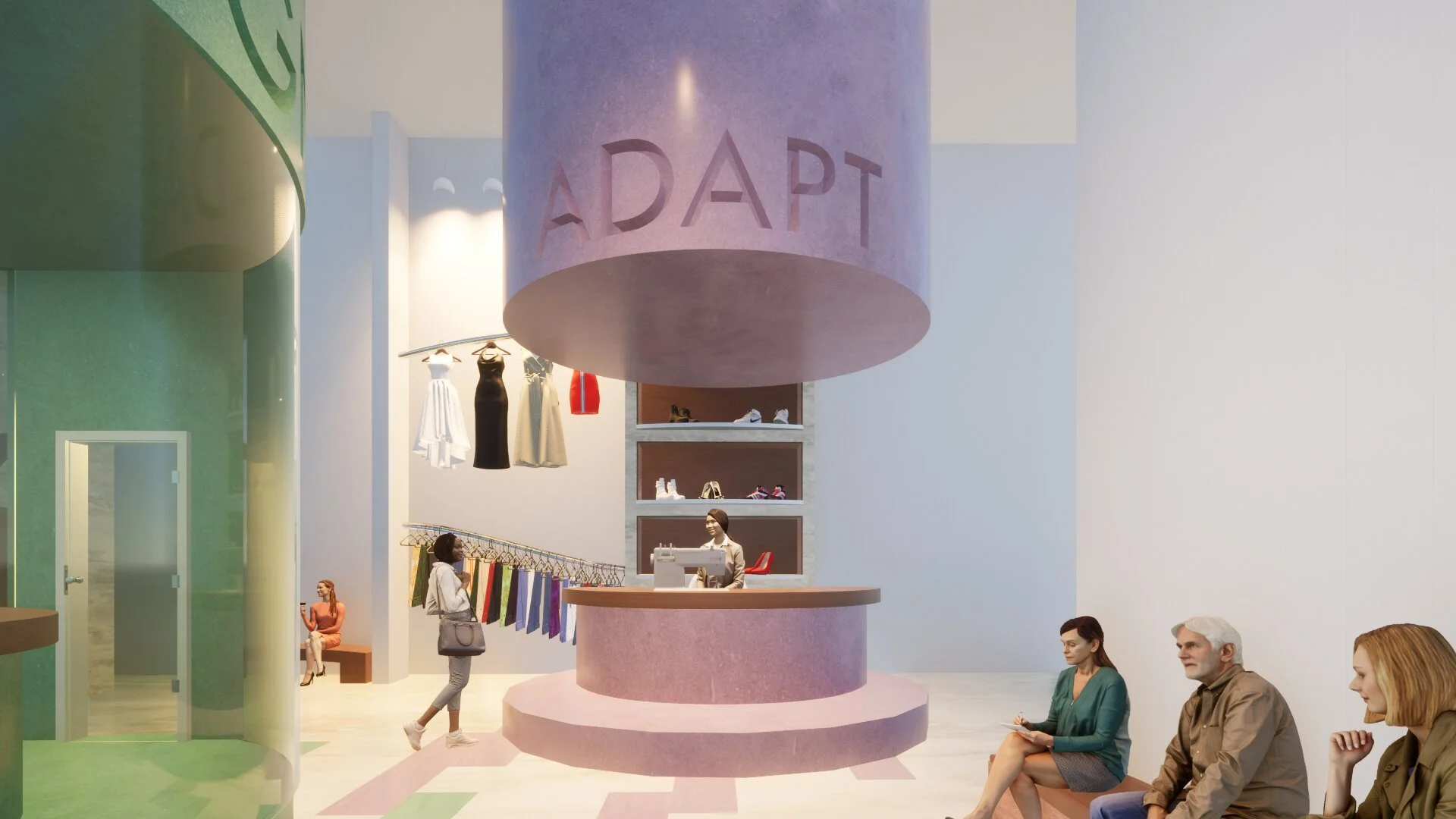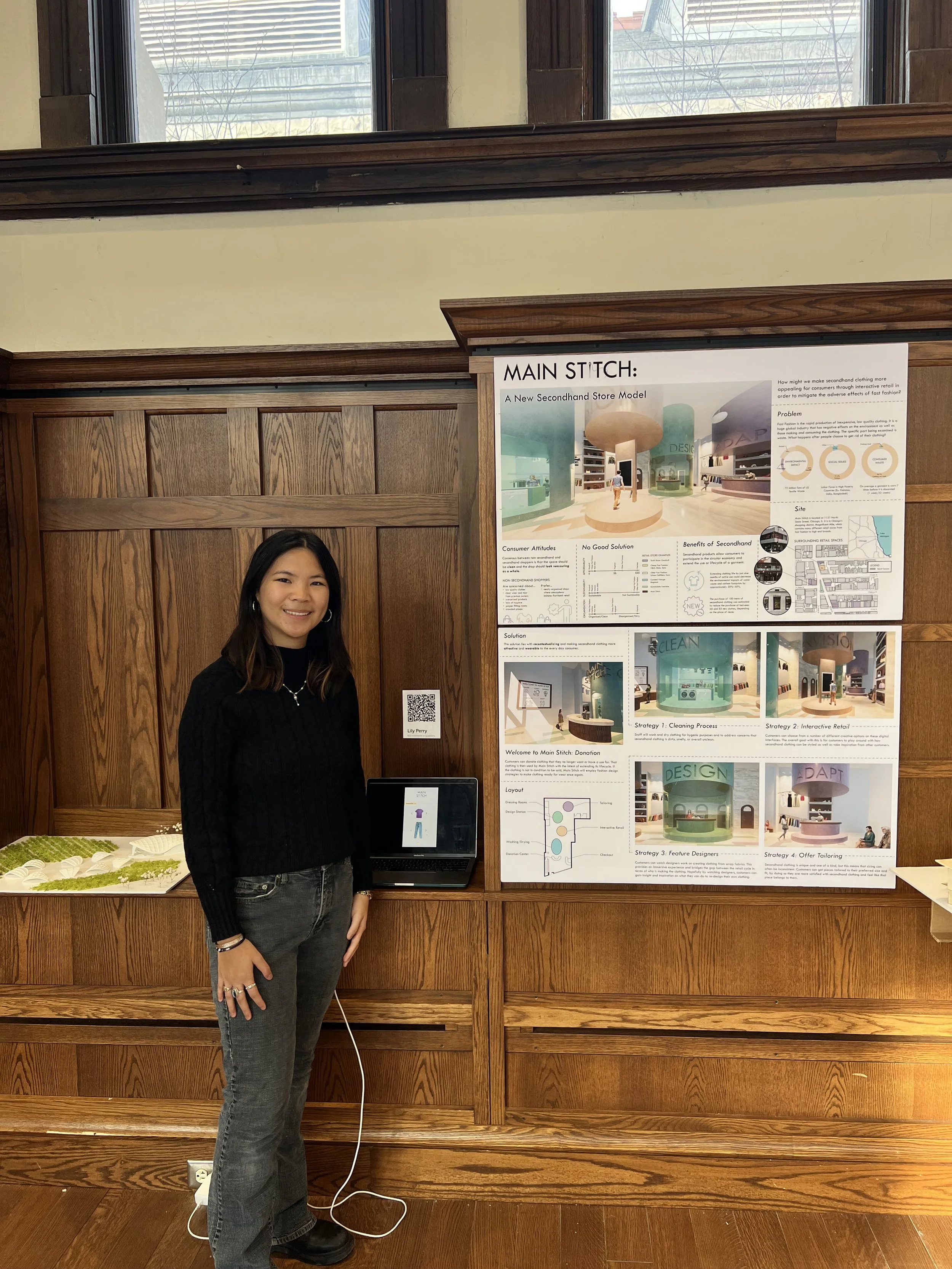Main Stitch: A New Secondhand Store Model
ARCHITECTURE | UX/UI DESIGN | BRANDING
Overview
Main Stitch is a secondhand store that takes an immersive approach different from that of traditional retail or secondhand stores.
Scope
A semester long project with the goal of addressing “How might we make secondhand clothing more appealing for consumers through interactive retail in order to mitigate the adverse effects of fast fashion?”
Role
Researcher
Interviewer
Interior Designer
Branding
Rhino3D
Twinmotion
Figma
Adobe Illustrator
Date
Aug - Sep 2024
Tools
Background
Main Stitch is my senior capstone project that synthesizes the skills learned during my undergraduate studies in Comprehensive Design. I dedicated four months to applying a systematic design process to come up with a solution for a real multidisciplinary problem.
Design Process
Problem -> Research -> Redefine Problem -> Solution
Timeline
The first two months were dedicated to researching, defining, and schematic design. The rest of the time was spent executing the interior and design solutions of Main Stitch.
Some tidbits of my thoughts
I started with a problem: fast fashion. But fast fashion is a broad topic with many different facets.
Problem
Fast Fashion is the rapid production of inexpensive, low quality clothing. It is a huge global industry that has negative effects on the environment as well as those making and consuming the clothing. The specific part being examined is waste. What happens after people choose to get rid of their clothing?
I decided to research fast fashion because fashion is a topic that I have personal interest in and something that resonates with me is encouraging mindful consumption.
Research
Fast Fashion is a huge topic that could go several different directions, so my first step was to breakdown the problem and consider why it is a problem. After consideration, there are three key players that I explored pertaining to the problem: fast fashion brands, consumers, and those producing the clothing.
Primary Research
Survey
My research started with a survey to explore young consumers (ages 18-23) relationship to fashion, motivations for shopping, views on sustainability, and consumption habits.
Key Insights:
People choose to shop fast fashion brands because of cheap prices and it is convenient to find what they are looking for
Many consumers always or sometimes feel like they…
buy more clothes than they actually need or use
have too many clothes or clothes that they don’t wear
Consumers are aware and concerned about fast fashion, but that does not necessarily reflect their shopping habits
Interviews
I interviewed two IU Apparel Industries professors, Dana Olsen and Mary Embry, to gather their perspective on the topic as experts in their fields.
Secondary Research
Academic Journals
After reading several sources, I took note of interesting points from each journal. At this stage my goal was to be open minded and gain a better understanding of as many different facets of fast fashion as possible.
The survey had 40 responses and results may not be completely accurate to broader opinions, but it was a good start to gain a better understanding of the problem.
I found the process of interviewing helpful for finding resources and gathering opinions from people who work directly with young consumers.
I used a convergent thinking process because the fast fashion problem has not been clearly defined yet.
I diverged my thinking to narrow down my focus and find the core of the fast fashion problem that I am designing a solution for.
Online shopping is popular, but I believe there will always be a desire for an in person experience.
Academic Journals - Themes
I started to organize my information into common themes to get a better sense of the parts of fast fashion that could be addressed with the scope of this project.
Redefining the Problem
At this stage, the majority of my research focused on fast fashion and considering how to prevent people from shopping from fast fashion brands. I read a lot about changing consumer behavior and my projected shifted to encouraging a different behavior (secondhand shopping) rather than discouraging a current behavior (consuming fast fashion brands).
My research pivoted to secondhand shopping and the reasons why people don’t choose to shop secondhand.
The defining question changed to “How might we make secondhand clothing more appealing to young consumers of fast fashion?”
My research pivoted to secondhand shopping as a solution because I realized it was more realistic to offer an alternative for a solution rather than prevent a behavior.
Schematic Design

Models

Block Plan

Ideation for secondhand shopping

How can shopping and donation experience function together?
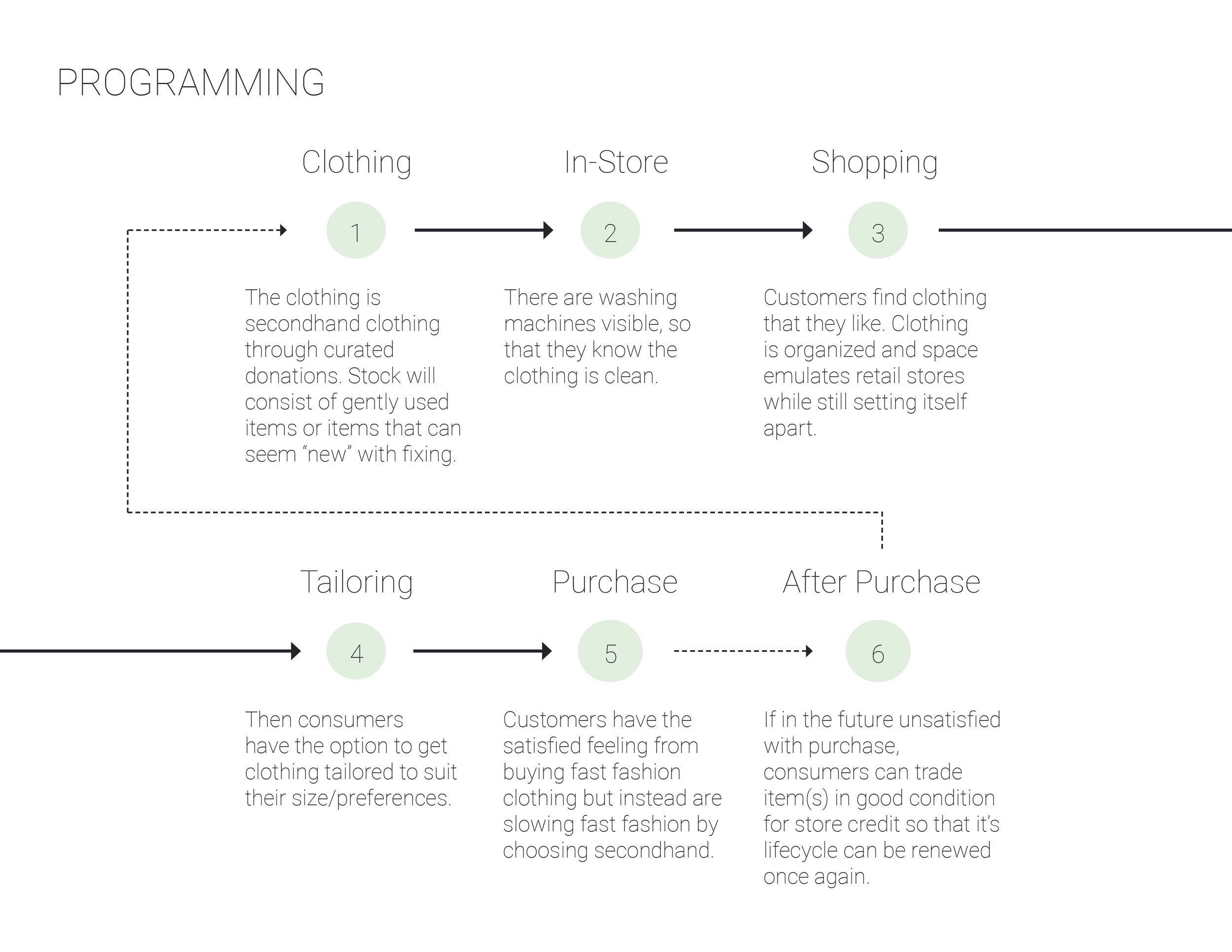
1st Draft of Programming
25% Schematic Design
To start I considered the negative stigma and reasons why people do not shop secondhand stores. My approach was to figure out how the store could solve those challenges and then based on that plan the space in a way that would fit those requirements. I also started exploration on visual aesthetics of the store via several models.
I took all my research about secondhand shopping, fast fashion, and consumer behavior to start ideating on a design solution.


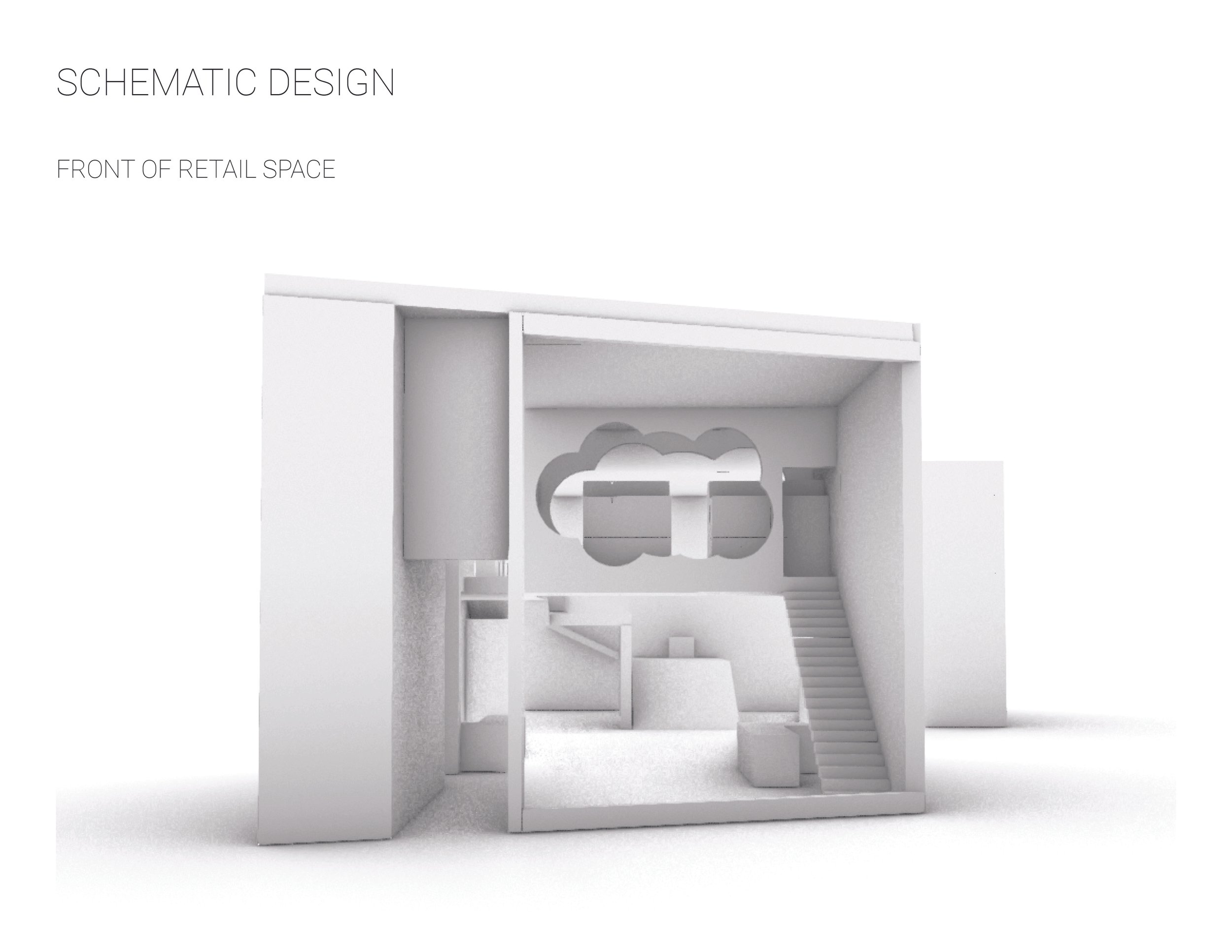

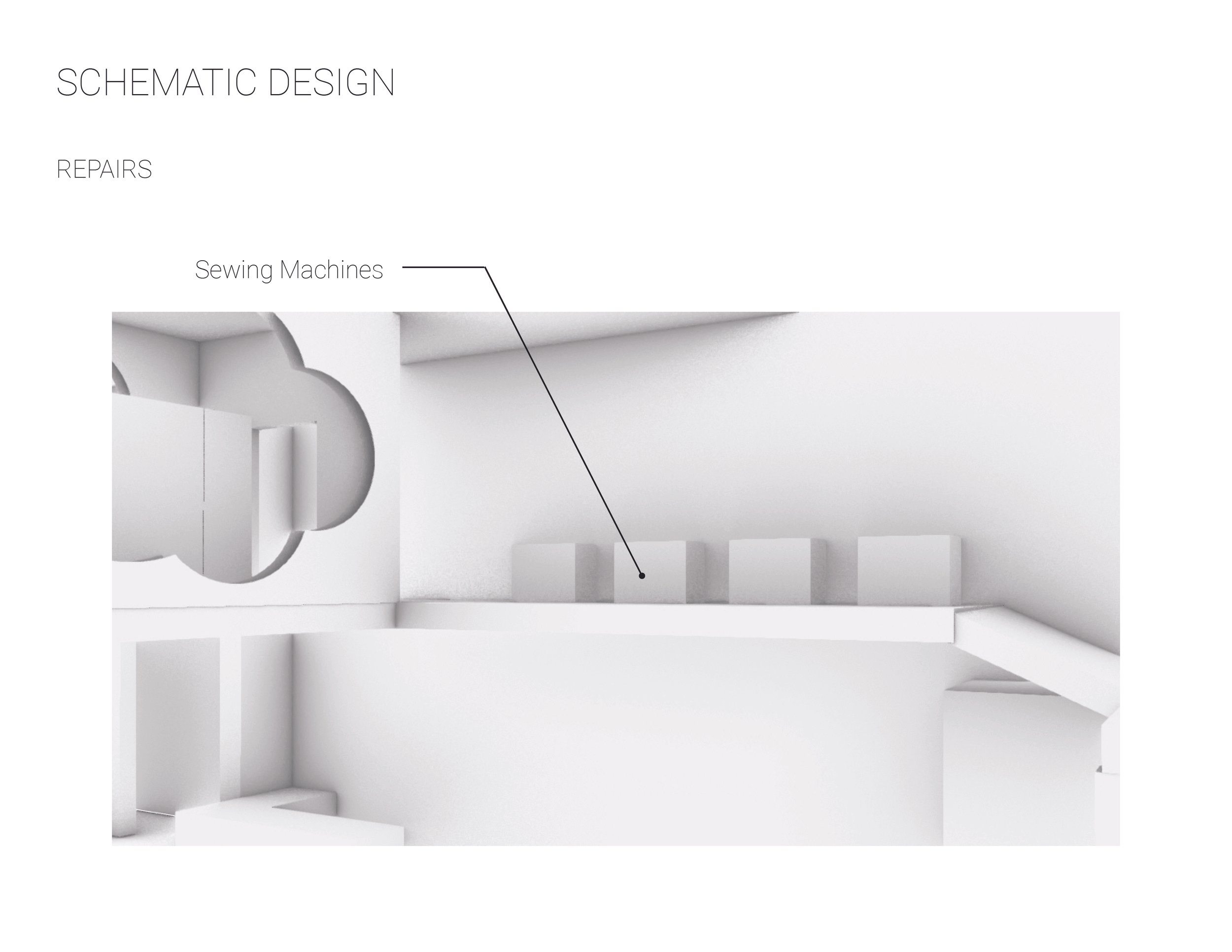
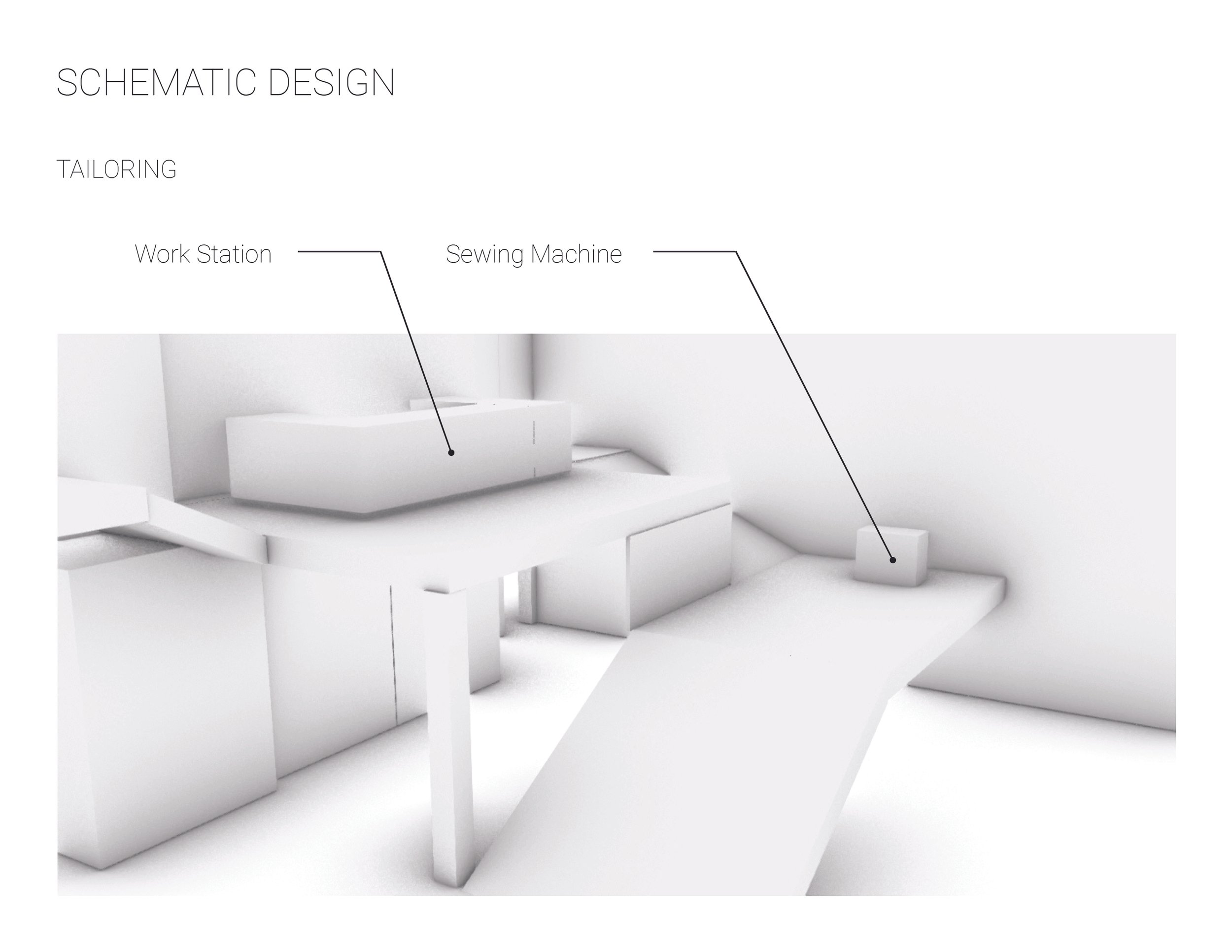
40% Schematic Design
I reworked the programming in more detail to consider what the customer experiences at every phase along with what is being done with the clothing. From there I made my first draft of the retail space layout.
The first floor plan was far from perfect. An important aspect of this phase was figuring out what areas need to be seen versus what areas need to be experienced.
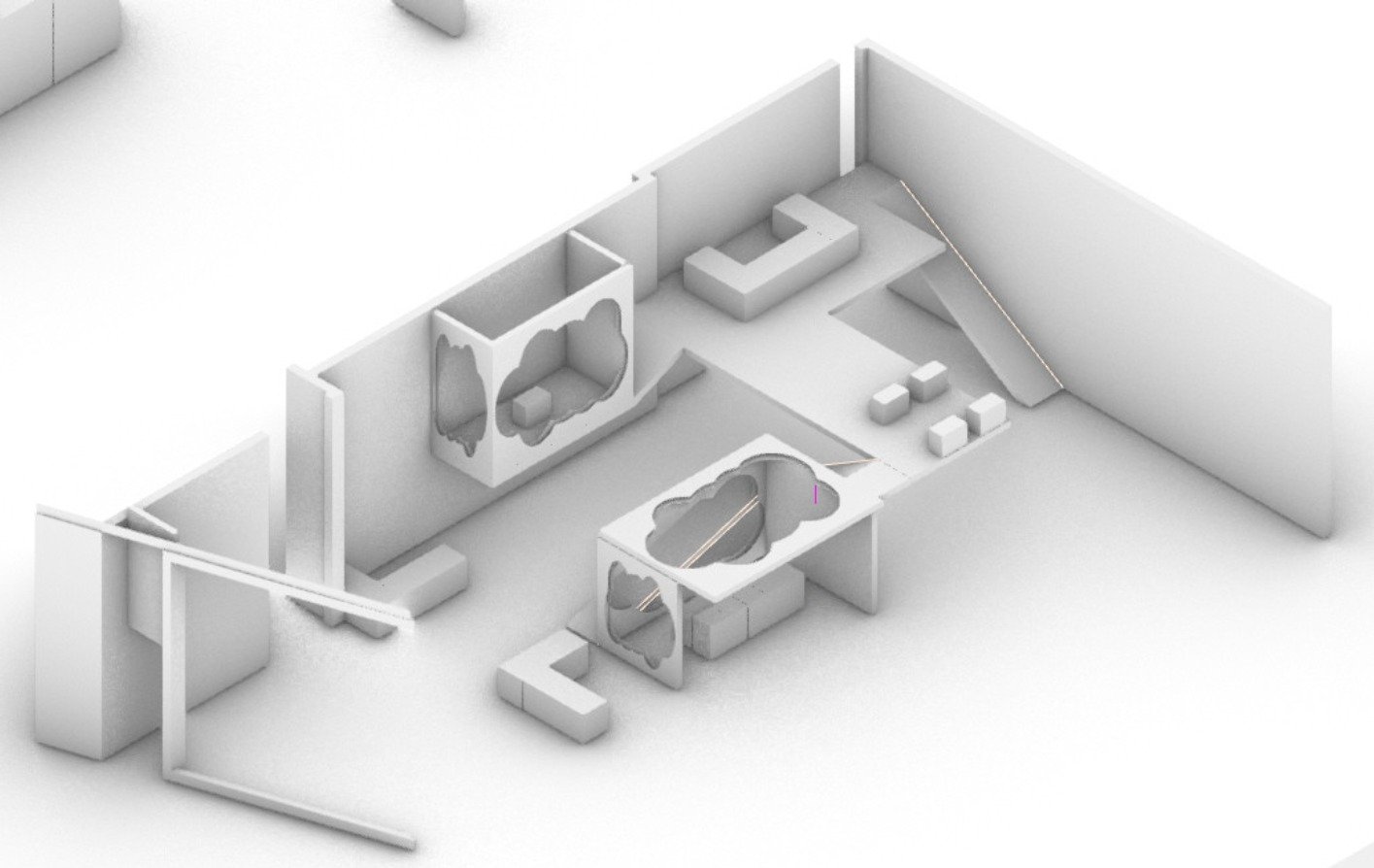





Further Design Development
There was only so much space to work with. After several floorplans I chose to reduce the size of some of the stations such as the washing/drying station to be more of a demonstration instead. I explored more of the visual design forms and landed on simple pods to highlight importance of each mini space.
I made many Rhino models exploring different layouts and visual forms.
Context
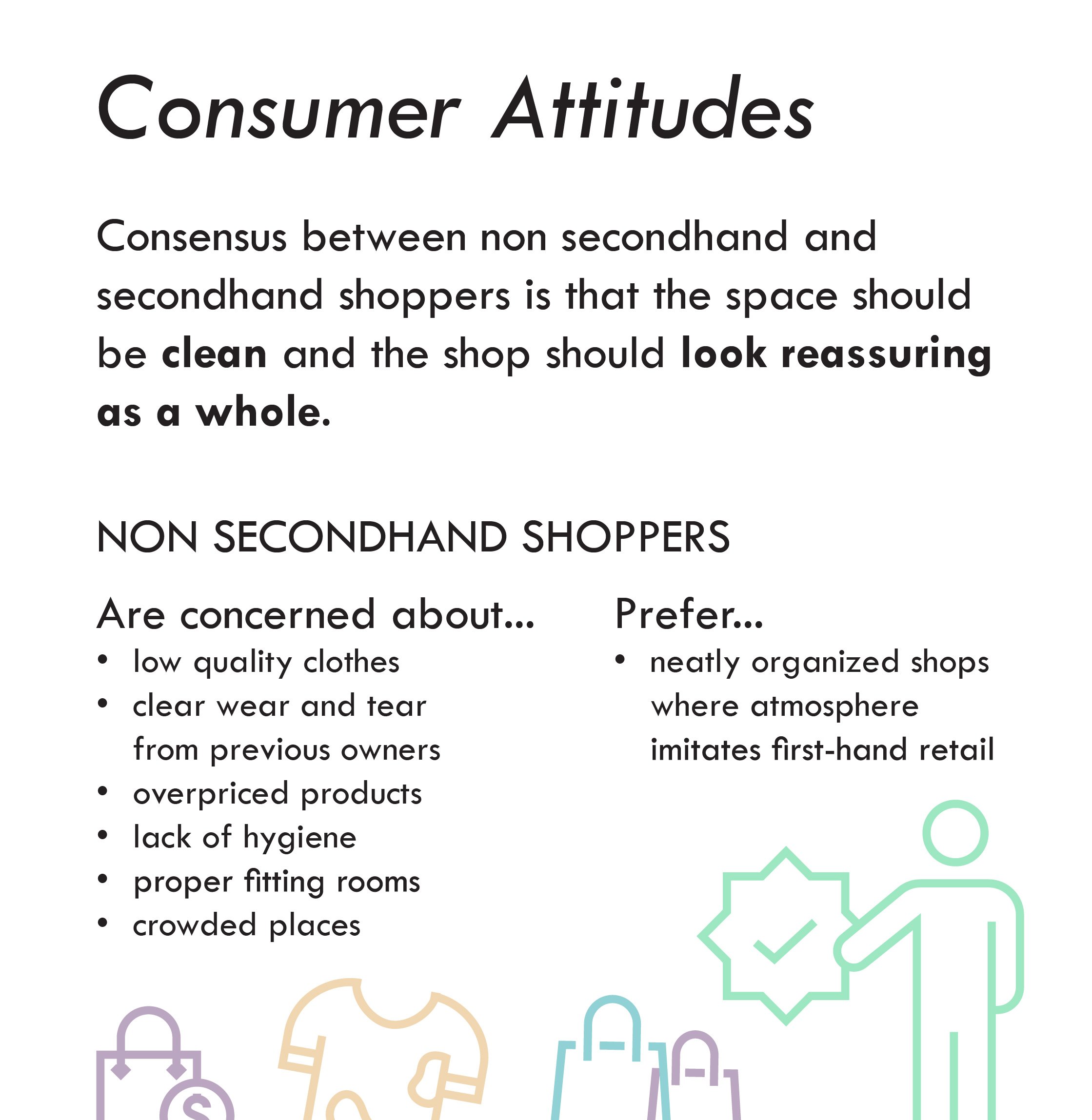

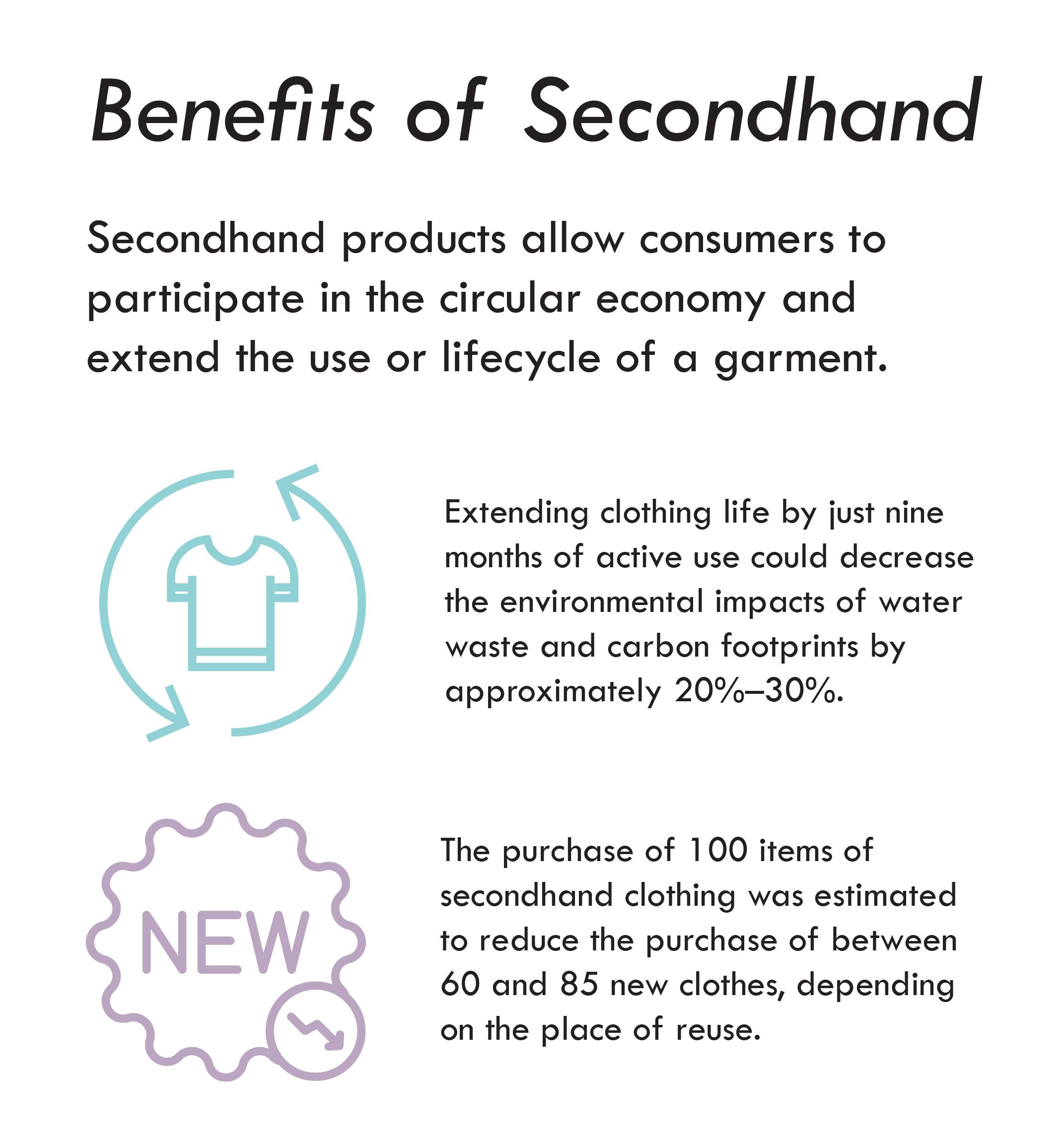

Solution
The solution lies with recontextualizing and making secondhand clothing more attractive and wearable to the every day consumer.
Welcome to Main Stitch: Donation
Customers can donate clothing that they no longer want or have a use for. That clothing is then used by Main Stitch with the intent of extending its lifecycle. If the clothing is not in condition to be sold, Main Stitch will employ fashion design strategies to make clothing ready for wear once again.
Strategy 1: Cleaning Process
Staff will wash and dry clothing for hygienic purposes and to address concerns that secondhand clothing is dirty, smelly, or overall unclean.
Strategy 2: Interactive Retail
Customers can choose from a number of different creative options on these digital interfaces. The overall goal with this is for customers to play around with how secondhand clothing can be styled as well as take inspiration from other customers.
Layout
The digital interface showing an example of someone creating an outfit from pieces in Main Stitch’s store.
Strategy 3: Feature Designers
Customers can watch designers work on creating clothing from scrap fabrics. This provides an immersive experience and bridges the gap between the retail cycle in terms of who is making the clothing. Hopefully by watching designers, customers can gain insight and inspiration on what they can do to re-design their own clothing.
Strategy 4: Offer Tailoring
Secondhand clothing is unique and one of a kind, but this means that sizing can often be inconsistent. Customers can get pieces tailored to their preferred size and fit, by doing so they are more satisfied with secondhand clothing and feel like that piece belongs to them.
Results
Main Stitch along with its Figma prototype was featured at Comprehensive Design’s Capstone exhibition. I plan to develop parts of it further and hope at least a little part of it gets out in the real world.
This project was a big challenge for me because although I had some experience in architecture, it is not my passion and I am more interested in industrial design. I am glad that I challenged myself because it really has made me flexible and Main Stitch has became a culmination of the skills I’ve developed in the last 4 years: 3D design, architecture, human centered design, industrial design, graphic design and research.
My confidence as a designer grew a ton! I learned if I can design for a small object I am just as capable of designing for a large space.












